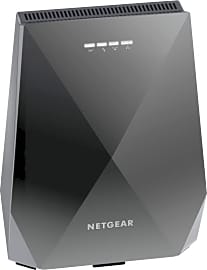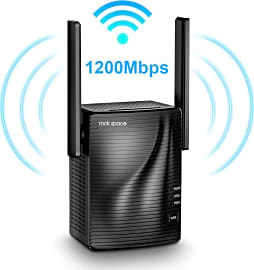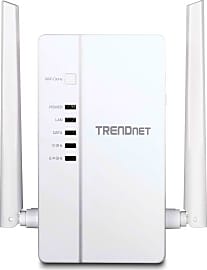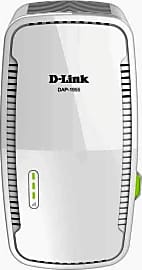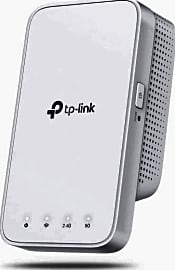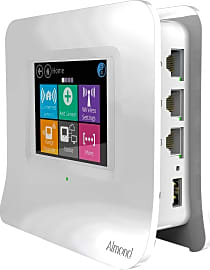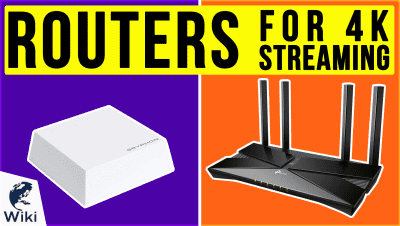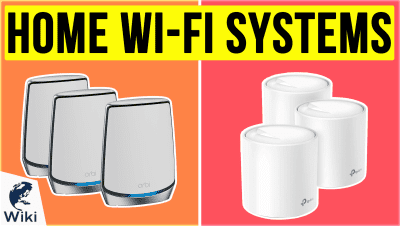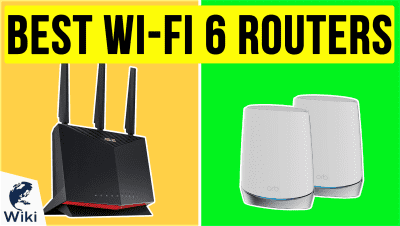The 10 Best WiFi Boosters

This wiki has been updated 39 times since it was first published in May of 2015. Having trouble streaming movies on your smart TV or getting the download speeds you need in your home office? You can easily extend the range and signal strength of your home's Internet network with one of these WiFi boosters. Placing them between your router and any device will allow you to connect from further away, all while maintaining a decent transfer rate and keeping latency low. When users buy our independently chosen editorial choices, we may earn commissions to help fund the Wiki.
Editor's Notes
November 04, 2020:
One term we are increasingly seeing when discussing WiFi extenders is "wireless mesh network", and many of the units ranked here use this technology. In short, these devices create multiple signal sources, to help ensure a seamless connection within the network, and as the demands of wireless connectivity become more complex, this feature becomes increasingly important.
In this latest update to our ranking, we made three new additions. These are the popular TP-Link AC1200, which replaced the older TP-Link AC750; the D-Link DAP-1955, which is both affordable and compact; and the robust, high-performance, Netgear EX7700. Each of these new items utilizes mesh functionality, and each can be managed via an iOS or Android app.
A dedicated app is a handy tool to have, as it assists in configuring the extender with your router, and helps you determine the optimal position where signal strength is at its highest. The TP-Link app goes one further and allows you to control which devices can connect to your network and disable them at preset times. This feature is especially useful if you are concerned about your children browsing the internet after lights out, or if you simply wish to limit their usage.
November 15, 2019:
There are two main reasons why you might want a Wi-Fi booster. You may have a router that works but is beginning to age, and in this case, an inexpensive repeater might be your best bet, especially if you don't have an ultra-high-speed Internet package or an incredibly large house. The TP-Link AC750 is remarkably affordable and praised by experts, but many users find it just doesn't hold up for very long in the real world. If you're okay with a comparatively unknown brand, check out the Rock Space AC1200, which is also pretty cheap. Although it doesn't technically use the 802.11ac standard, it does operate on both the 2.4- and 5-gigahertz bands, so it's plenty fast enough for streaming video.
Alternately, you might just need a stronger signal if your house is very large or if your walls obstruct the signal too much. If you plan on gaming, streaming multiple 4K videos at once, or just being generally demanding when it comes to speed, you can probably get by with a mid-range device, such as the TrendNet TPL-430APK or the TP-Link WPA8630, which are two of the best powerline extenders. In places where there's a glut of Wi-Fi networks, these handy devices can help propagate a strong signal in spite of overcrowding. For a bit more, the TP-Link RE650 and Linksys Max-Stream RE9000 provide good performance using wireless communication only. And those who insist on making the very most of their bandwidth need to look at the Netgear Nighthawk Mesh X6S and Amped Wireless Athena RTA2600-R2, which should take full advantage of even the most high-performing routers and ISPs.
Finally, there are two specialty items worth mentioning. The Alfa SMA is a simple antenna upgrade that can breathe new life into old devices, and it's one of the least expensive tools for increasing range. The Securifi Almond 3 is aimed at security-minded users and has a host of useful features, but it's pretty costly and its range isn't actually all that great.
An Inflatable Internet
What I failed to realize is that these boosters amplify the signal before they relay it.
Without the internet, we are lost. When I moved a couple of years ago, there was only one place in the house that we could install a modem and router without the cable company doing a bunch of expensive drilling and rewiring. From where it sat in our kitchen, there was next to no signal making its way into my office. I split the band between 2.4 GHz and 5 GHz, and where the 5 GHz couldn't even reach the office to begin with, the 2.4 GHz channel came through with all the speed of zombie apocalypse-level traffic jam.
For a while, I moved my work out into the living room, sectioning off a small portion of the space with a desk and some storage. Eventually, the intermittent sounds of other people coming and going, the incessant droning voices of the television news playing in a nearby bedroom, and the general lack of privacy forced me to seek out an answer.
That's when a friend of mine suggested a WiFi booster. At first, it didn't make a whole lot of sense to me that a device located at some middle point between my wireless router and my computer could do anything but pass along a signal that was too weak to begin with. What I failed to realize is that these boosters amplify the signal before they relay it.
Picture the packets of information flying out of your wireless internet router as balloons. Your router sends out all sorts of balloons in a bunch of directions, and your computer sends balloons right back. This exchange of balloons is our experience of giving and taking information and commands across our home network.
The problem is that in order for these balloons to travel, you can't tie them off, for the air inside them is their very propellant. In my case, the balloons were flying toward my office and running out of air about three feet from the door, where they unceremoniously dropped to the ground, useless.
A wireless booster acts as a sort of filling station for your internet balloons, replenishing them with a fresh supply of air so they can travel much farther than before. Once I installed the booster in my place, the balloons were free to fly all around, and I was free to move back into the quiet privacy of my office.
You Need Power To Stretch
We take our internet awfully personally, even though it's one of the more impersonal things in our home. When it drops out, we all turn on one another, accusing this person of downloading too many movies and that person of eating up all the bandwidth with some ridiculous MMORPG. A quick power cycle usually restores the peace, for a time, but if the problem persists, and you need to extend that signal, which booster will serve you best?
We take our internet awfully personally, even though it's one of the more impersonal things in our home.
Before you begin to compare devices, you should take a look around your house for the ideal place to install an extender. It should be somewhere relatively equidistant between your router and your primary computing, streaming, and gaming locations. It should also have ready access to power.
When I went to install my first booster, I realized that I had mapped out its position in my home based on the purported size of its signal relay, only to find that this ideal location I'd chosen hadn't a power outlet in sight. As a result, I moved it to the most logical spot left, which was just too far from the router to receive a viable 5 GHz signal, resigning me to the slightly slower 2.4 GHz signal.
Eventually, I grabbed a stronger extender and installed it a little closer to the router itself, boosting the 5 GHz signal well into my office. Once you've found your installation point, you can take a measure of each booster's coverage claims to evaluate whether or not it will get you the signal you require, and avoid the trap into which I initially fell.
It may be a more minor concern, but the limitations of available outlets and the given design of a house or apartment might make it so that you have to install your booster in a highly visible area, and some of these things are downright ugly. If you've got our list narrowed down to a few good options, play it safe and get the one that looks the best.
Born Of Necessity
Although wireless packet trading reaches back to the ALOHANet of the 1970s, WiFi in any form recognizable by today's standards didn't begin to take shape until the early 1990s.
Wireless home internet didn't see much use in the days of the telephone modem, as the weaker 56K signals didn't translate well to wireless communication.
In 1997, the first 802.11 protocol hit the airwaves, and would later become the gold standard for wireless transmission, as, even in 1997, it clocked speeds up to 2 Mbit/s.
Wireless home internet didn't see much use in the days of the telephone modem, as the weaker 56K signals didn't translate well to wireless communication. When DSL had its moment in the sun, telephone companies outfitted more homes with wireless routers, and by the time cable took the reigns as the only significant provider of high speed internet, wireless connectivity seemed like a given.
Around that time, due to the hardware limitations of early consumer wireless routers, the companies responsible for creating the routers themselves also set about creating and marketing signal boosters for customers with large or complicated areas in need of better coverage.




